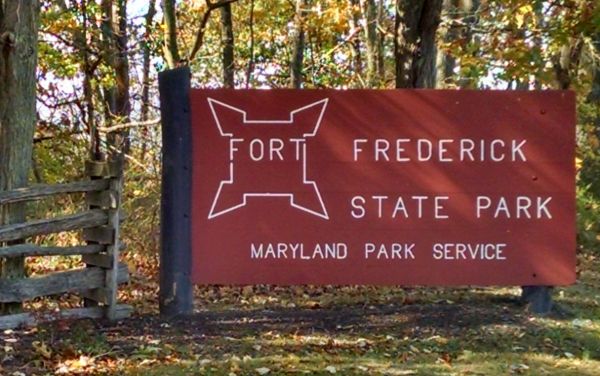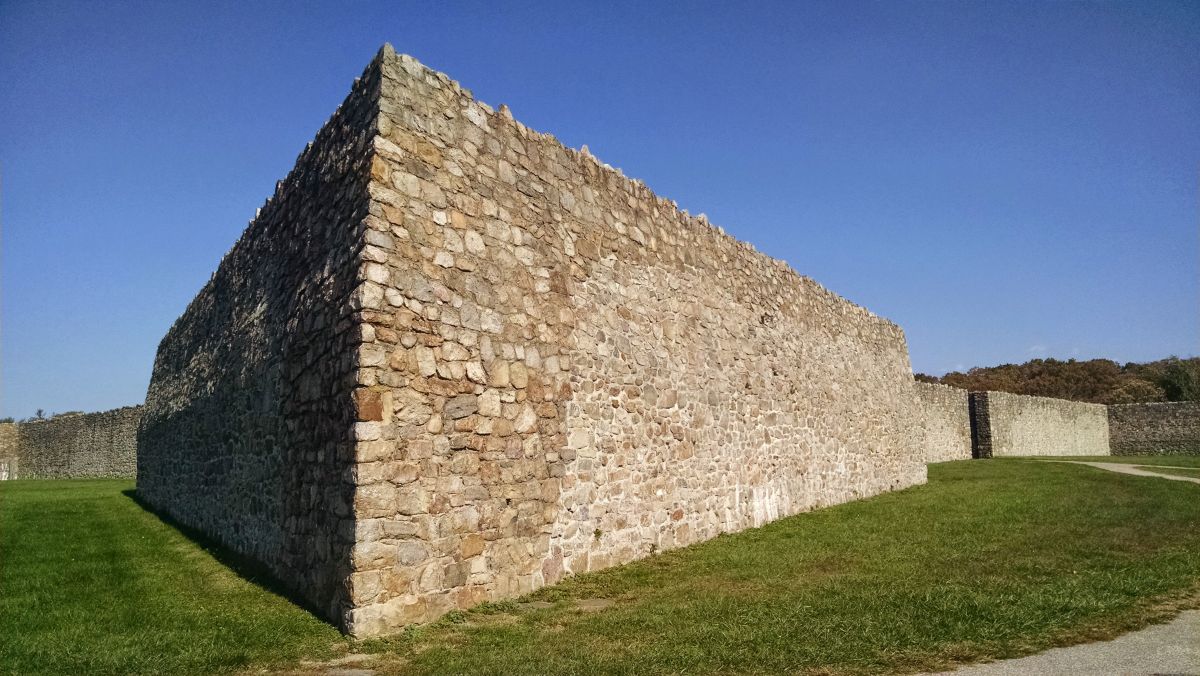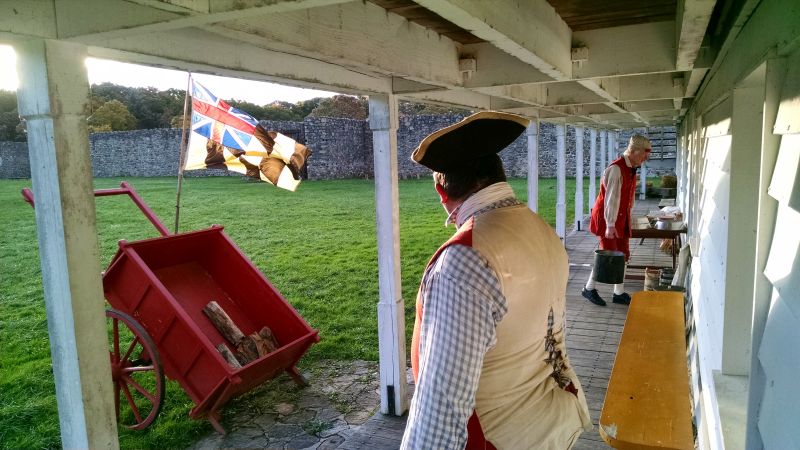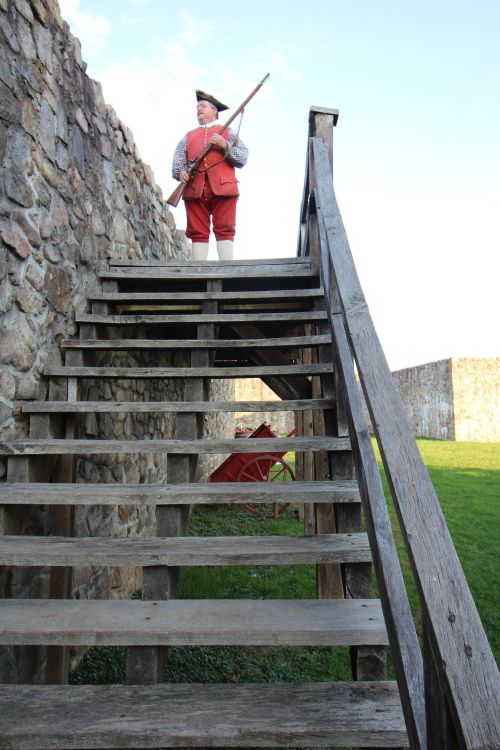Authors:
Historic Era: Era 3: Revolution and the New Nation (1754-1820s)
Historic Theme:
Subject:
Fall 2017 | Volume 62, Issue 5


Authors:
Historic Era: Era 3: Revolution and the New Nation (1754-1820s)
Historic Theme:
Subject:
Fall 2017 | Volume 62, Issue 5
 As I drove through the Maryland woods to old Fort Frederick, it was hard to believe that Colonel George Washington once called this beautiful and tranquil scene a “theater of bloodshed and cruelty."
As I drove through the Maryland woods to old Fort Frederick, it was hard to believe that Colonel George Washington once called this beautiful and tranquil scene a “theater of bloodshed and cruelty."
Hoping to photograph the massive stone fort that Saturday morning in the golden light of dawn, I snuck past a sign saying that the park would not open until 8:00. The sun was just coming up, painting a golden edge on the dark gray clouds that moved rapidly across a deep blue sky.
If I were caught trespassing, I hoped the ranger would sympathize with my good intentions.
Fort Frederick sits only a mile from busy Interstate 70, above the Potomac River in the mountains west of Hagerstown, Maryland. Even though it embodies so much history, the fort is well off the path of most travelers.

Erected in 1756 at the beginning of the French and Indian War, Fort Frederick is the best-preserved English stone fortification in the original Thirteen Colonies dating from before the Revolutionary War. (Castillo de San Marcos in St. Augustine, Florida, was built by the Spanish and Fort Ticonderoga in New York was originally French.) It was the cornerstone of Maryland’s defense against French and Indian attacks coming from the west and north.

I parked my car in the empty lot and walked around the Fort’s ancient stone walls that reached up six feet above my head, looking forward to a few moments of solitude communing with the past. George Washington visited the fort often, and this was the last bastion of civilization that Colonel Braddock saw before marching off to his death 160 miles away in the wilderness south of present-day Pittsburgh.
As I entered the huge gates with their hand-forged ironwork and thick, weathered wood, I was surprised to see someone already in the fort I thought was closed: a soldier in 18th century uniform leaning against a wooden column, drinking from a mug and watching the early morning sunlight shining through a Colonial Maryland flag in the courtyard. When I asked what he was doing in the fort so early, Jim Rogers explained that he’s a volunteer with the Joshua Beall Company of the Maryland Forces, dedicated to guarding the frontier and helping visitors relive the past.

The